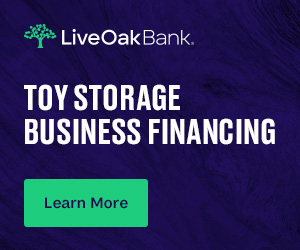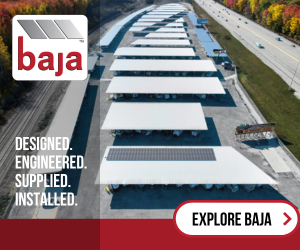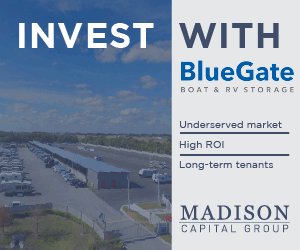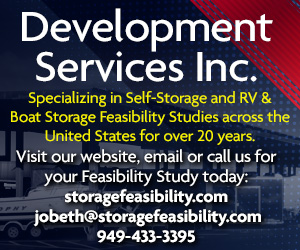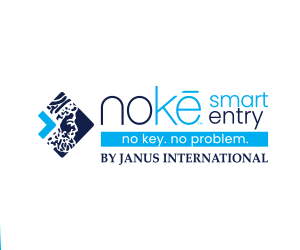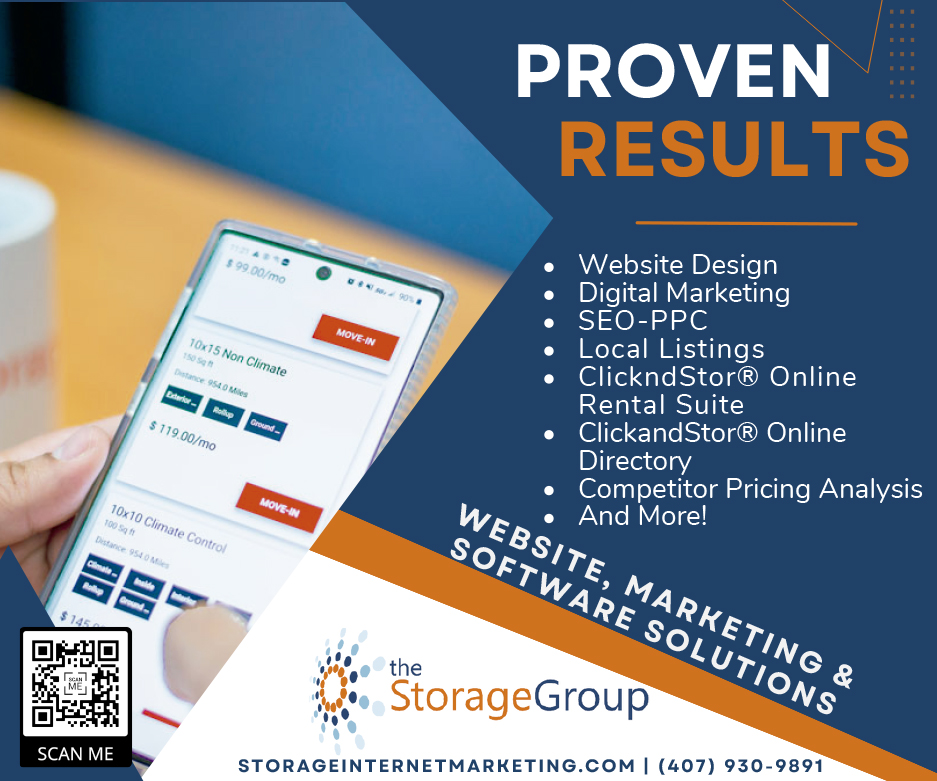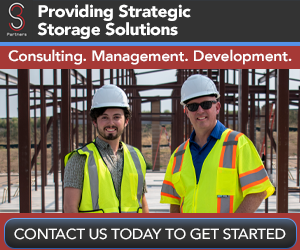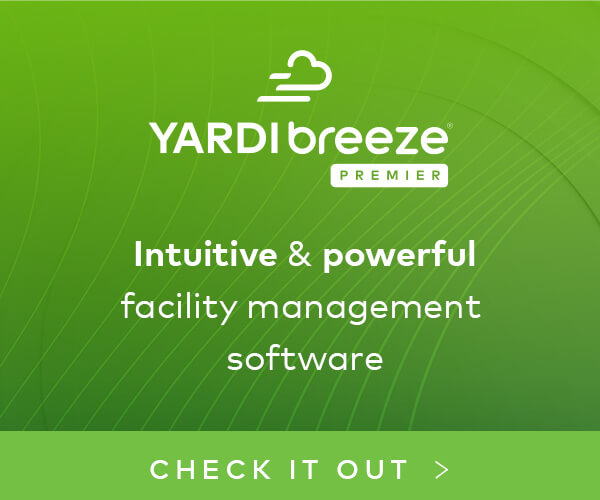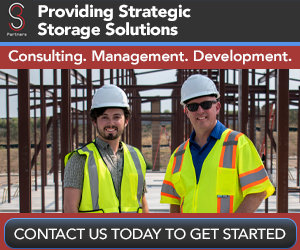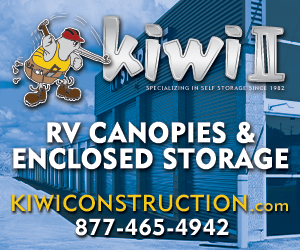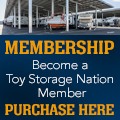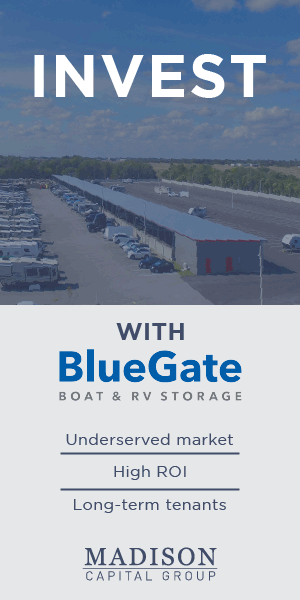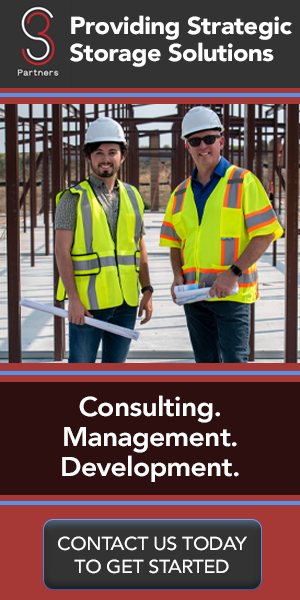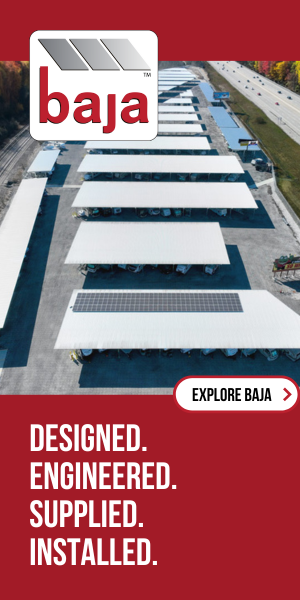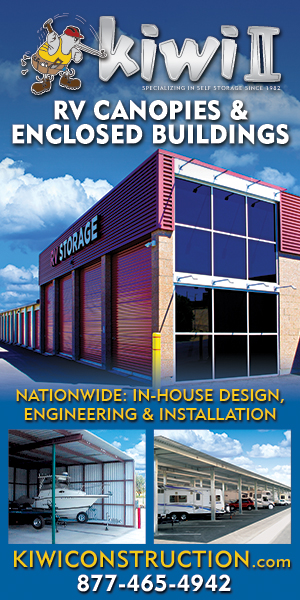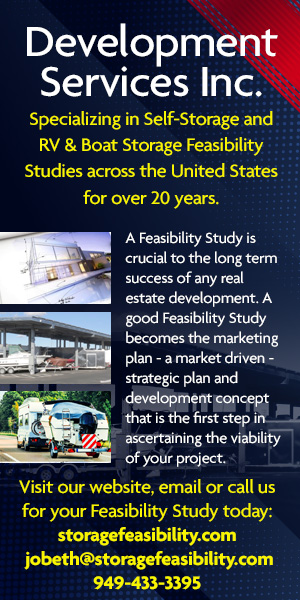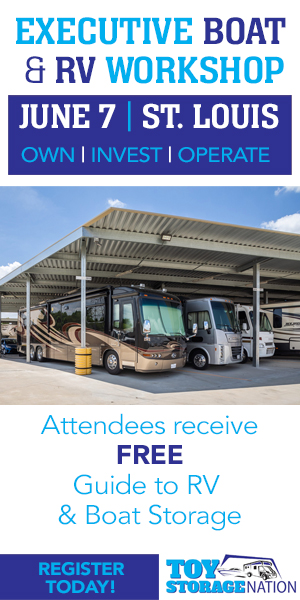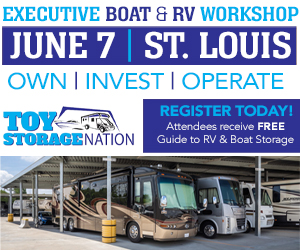Chris Koenig is Managing Member of Kingsland Companies LLC, a self-storage and RV/Boat storage development, investment and management company. We are grateful that he took the time to share so many great insights about the RV and boat storage industry.
Can you tell us how you landed in the storage industry?
I started a property tax appeal business in 2008 that lowered commercial property owners’ property taxes during the 2008-2012 real estate crash. I got to see the P&Ls for all types of properties from warehouses to wineries, assisted living facilities and self-storage.
Hands down the self-storage facilities were performing the best during this time with 5-10% rent reduction versus 25%-100% for other asset classes. I’d always been interested in self-storage, but this sealed the deal for me. I hired one of my property tax clients to build a facility for me in Brentwood, Calif., after I drafted up a business plan, found the property and entitled it.
Going down this process in Brentwood, I was referred to Bob Hayworth’s RV/Boat storage facility in Oakley. After touring Bob’s facility, and learning about the solar and the whole business model, I was hooked and wanted to do more of the solar RV and boat storage facilities. Since then, I’ve been able to buy land and entitle almost 1MM square feet of solar RV and boat storage; nearly 60% is under construction or built now, with the rest being built this year and developed/own almost 200,000 square feet of self-storage.
What’s your five-year prediction for the RV and boat storage industry, and why?
I think there will be a flux of people entering the “buy existing” market in the next one to two years. That’s an easy play to get into the business since you don’t have to deal with governmental red tape to get approvals, secure construction financing, etc. Financing for existing sites is simpler and proving the concept to investors can be achieved much quicker–because we all want instant satisfaction and development takes many years to prove out.
The problem I see with this is a supply and demand issue since RV and boat storage facilities rarely go for sale unless there’s a death, divorce or dispute between partners. If there’s 100 cash buyers on the sidelines for five to 10 sites across the country, pricing will be out of control. As an owner, this is good news but it could hurt the market with groups overpaying and unrealistic rent growth underwriting.
I know there is and will continue to be demand for this Class-A covered RV and boat storage product. One of the compelling reasons I think fewer of this product will be built when compared to self-storage is that most groups wanting to develop RV and boat storage are coming from the self-storage world. A simple, back of the napkin proforma easily shows that when comparing covered RV and boat storage with conventional self-storage, you can get approximately two times the rent but only have to spend 20-30% more (since you already paid for the land, grading, paving, fees, etc.).
That’s a no-brainer but there are other factors such as market demand, absorption and way-of-life. Self-storage has more turnover and is management-intensive compared to the Class-A RV and boat market. To each his own, right? I will never tough commercial, retail centers again with a 10-foot pole, and I am glad I cut my teeth on that segment of the market in my early days, 15 years ago.
I think three to five years from now, assuming interest rates don’t go to 12% (which is very likely), I think there will be steady growth and development of new Class-A RV and boat storage sites. One of the limiting factors for this industry is availability of large parcels at reasonable prices that can be developed for this use; a lot of stars have to align and then you have to have a jurisdiction that will allow the use.
Sadly, on 10+ acres of industrial land, it’s not a great look to only create one to two jobs and no sales tax. I also think in three to five years there will be the Public Storage and “big boys” buying up existing Class-A covered storage facility portfolios to enter markets with large amounts of cash, and developers could capitalize on this with years of hard work to entitle, build and lease up facilities. This takes capital, partners, financing and an “all-in” mentality, but it could pay off big.
What are key steps to success that no storage operator should overlook when designing/building their facility?
Location is important. It’s not as critical as other real estate uses such as neighborhood commercial or apartments but neighborhood, crime, access are all important and standard requirements in any real estate. I’ve written about this for TSN before but “if you build it, they will come” does not apply to this business unless you got lucky with cheap land in an A+ market with no supply.
Security is important from a customer perception and from a realistic, site security point of view. I often see skimping on six to eight feet chain-link, perimeter fencing used instead of a solid, 10-foot tall metal fence. This might save a couple hundred thousand on project development costs, but in the long term I think there are two issues:
- The customer perceives this as an inferior product and lower rents will reflect this and/or they will move to the other facility with the 10-foot metal fence; and
- The 10-foot metal fence is literally more protective and keeps these expensive toys safer.
Technology is another item that should not be overlooked. These items are easier to roll into initial/construction financing rather than rehabbing later with cash. Technology is always advancing, and customers will appreciate/pay more for this tech if they see the value to their toys. 20-30 HD cameras with alarms, gates, etc. will give customers comfort in storing their toys.
For those with a tight marketing budget, are there ways to cut corners but still reach consumers and potential tenants?
Boots on the ground, guerilla marketing to local RV and boat dealerships is crucial. Drop off swag, business cards, show up in person and talk to the salespersons/managers. Get the word out about your facility to the people that are selling the toys to be stored at your facility. Only good things can come from this tactic and no one is doing it! (See Chris’ recent article on “guerrilla marketing” at Toy Storage Nation.
Google reviews has taken over Yelp for consumers. Focus and harvest/maintain your Google reviews. Don’t pay for Yelp. That’s my advice.
You’re an advocate of including solar panels on projects. Is that something every facility can consider? Why or why not? What are the benefits?
I think every facility should consider solar at a minimum to offset 100% of the site’s usage, unless the utility rates are less than $0.08/kWh. Anyone or any solar company can easily tell you this usage and rate. Don’t trust what one or two solar companies tell you such as, “Oh this is the only way to finance these.” Solar finance can be complicated but in general it’s like buying a car you can:
- Lease it and make payments to a leasing company where you don’t “own” the solar and the leasing company takes the solar tax credits;
- Finance it conventionally with a loan where you get the solar tax credits; or
- Pay cash and you get the solar tax credits.
This covers 99% of commercial solar financing option. Leasing might work for most as the payments are less (like a car) but you might be leaving the solar tax credits on the table that could give you a net positive benefit. Talk to your CPA, because am not giving legal or accounting advice!
The larger solar canopies, solar power plants, essentially, are much more complicated and do not work in all states/areas. I’ve mastered the California solar market and its codes such that I can replicate this business model but I am not, yet, an expert in other states. I’d recommend anyone to talk to five, 10, 20 solar companies and sift through the details to see if it is viable to do a larger scale solar farm.
Regardless, offsetting the site’s usage can be financed so savings can be Month 1. The elusive “how many years to pay it back?” is really only relevant if you pay cash. A five-year payback is about a 20% cash-on-cash return, which is what these are running if you pay cash. Also, when you capitalize the solar savings it should more than pay for it on a refinance or sale.
Do you believe facilities that stick with old-school design (dirt lot, outdoor parking, no security, fencing or roofing) can continue operating on a shoestring, or is it imperative to upgrade to Class A? Is it smart to take little steps to improvements over none at all?
I believe there will always be a market for this product type. Someone will always want to or need to spend $50 or $100/month to store their beat-up boat and RV somewhere since they don’t have space on their property or their apartment complex. I believe this will be a thing for my lifetime.
If I were to rehab one of these facilities, I would make all the improvements at one time and come out of the cocoon as a bright shiny new facility demanding higher, market rents for a covered Class-A (maybe A-) facility. I don’t think a dirt lot is attractive and am yet to see if a combination of asphalt and compacted gravel demands a reduction in rent versus a fully paved site.
There are benefits to some gravel to use for storm water treatment and maximize rentable square footage for a site. If you can get away with some gravel, with realistic expectations that you might get lower rents, then this could be an option.
I firmly believe the installation of a covered space will demand a 50% – 100% premium in rent compared to uncovered spaces, even on the same site. Covered canopies, fencing, security and gates should be the basic improvements to get to a B+/A- level and hopefully 50%-100% rent increase.
Any other words of wisdom you’d like to share from your viewpoint to toy storage newcomers?
Ask questions and go to Toy Storage Nation workshops and local self-storage meetings, and network with owners and operators all day, every day. Everyone is always learning and just because one person says this is the way to do “it,” that is likely not the only way to do it–it’s probably just the one way that person does it.
Being new to development is hard and scary. Sometimes you’ll enter a vortex of confusion, not knowing how to push the ball down the field and not getting answers from your high-paid consultants. Toy Storage Nation can be a network for brainstorming and solving some of these issues. Oftentimes, I find myself very blinded and lost in the forest. I am fortunate, where I can bounce ideas off my business associate (my wife) to get a new perspective to solve a problem.
I have shared a lot of information with people wanting to get into this business and I am happy to share my knowledge with newcomers. Feel free to reach out to me usng If anYou have my phone and email.
To learn more great tips about the industry from Chris Koenig, sign up for the Toy Storage Nation Executive Workshop hosted in Las Vegas, April 14, when Chris will be leading a presentation to address the following hot topics:
- Why it’s important to provide customers a fully automated move-in experience.
- How to go from a Class A to Class A+ Boat & RV facility with technology.
- How technology has improved the tenant onboarding experience and what it means to operators.
For more information and to register, visit: https://toystoragenation.com/las-vegas-2023-event/










